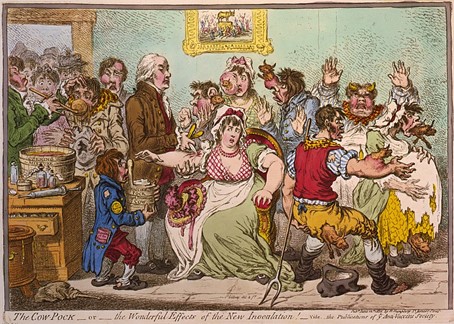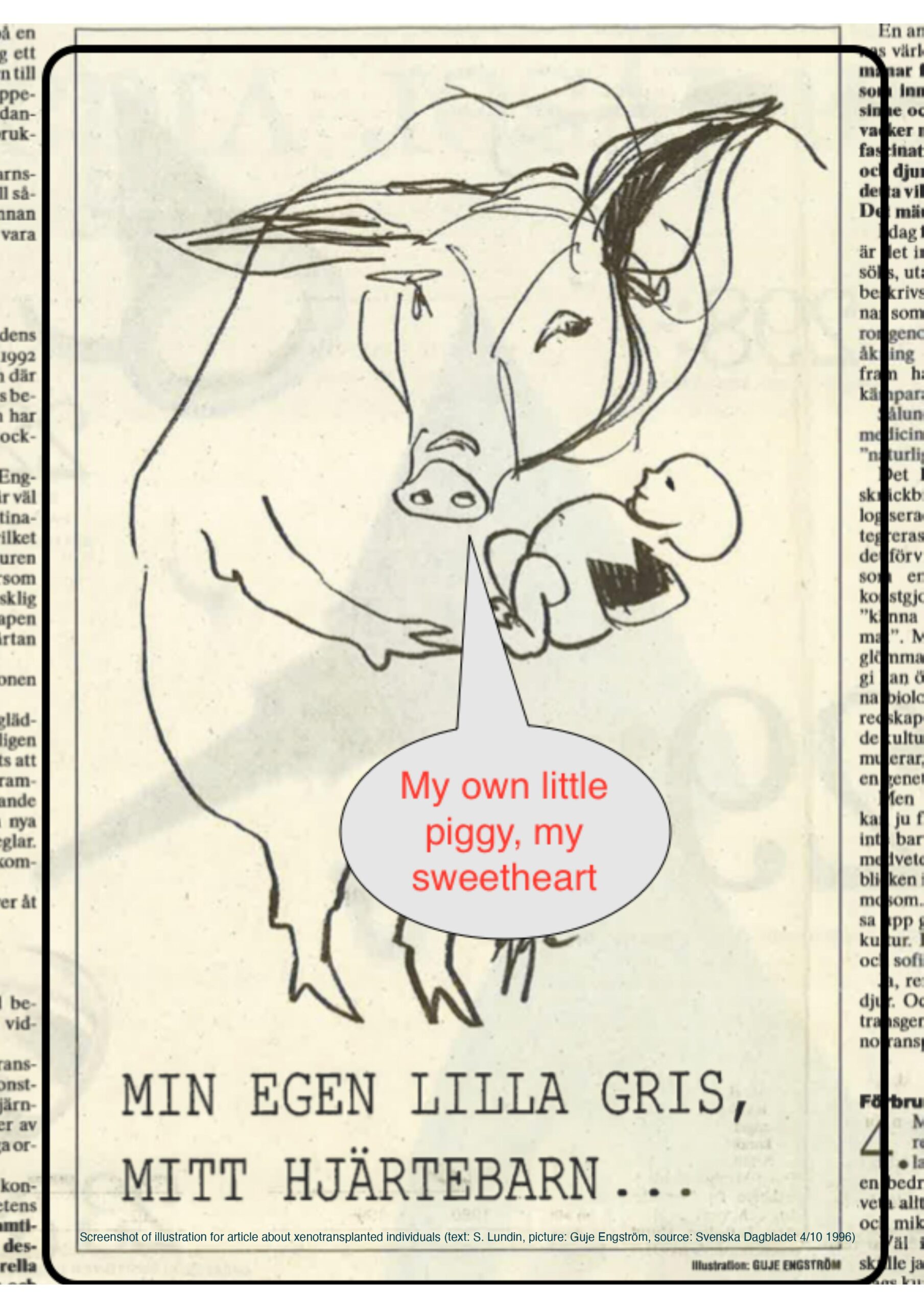Blog by Susanne Lundin
In the late 1990s, I visited a farm at a secret location in the UK where I met the offspring of the world-famous Astrid. Astrid herself was staying in another place, hidden from the public eye (as is customary for celebrities). Astrid was not just any mother of several children, but a very special one. Although she carried human genes, she was far from being human. She’s the world’s first transgenic pig. She was born in 1992 and was the result of a microinjection of human DNA into a pig embryo.
Astrid and other transgenic pigs were bred by a multinational company nearby Cambridge. The animals, or rather the technology to make them compatible with the human immune system, were invaluable both economically and medically. Transgenic creatures were expected to become biological resources for humans in need of transplants. Not surprisingly, patent was among the factors that eventually placed the research company outside the UK. Equally unsurprisingly, this research paved the way for the world’s first heart transplant from a genetically modified pig to a human. On 7th January 2022, the American David Bennet received a xenograft (from the Greek xénos = alien). A pig gene was replaced by human DNA to prevent the recipient’s immune system to reject the organ. The operation has raised various medical and ethical concerns world-wide. Yet few of these ethical discussions address how people feel as they are about to get a xenotransplant.

David Bennett stated, “I’ll do anything to survive,” echoing a view of many terminally ill people around the world. That’s what a group of Swedish diabetics said in the early 1990s, when they were among the first in the world to receive insulin-producing cells from pigs.1 All were part of a medical trial in Sweden, an experiment involving non-transgenic transplants that led to a collaboration between Sweden and the UK. As a cultural researcher, I investigated their experiences, and one of my aims was to find out how these patients would relate to genetically modified, transgenic animals. So the reason for my visit to the farm where Astrid’s offspring were roaming the stables, or being sedated to undergo in vitro fertilization where human DNA was inserted into sows’ embryos, was to gather more ethnographic background for studying the relationship terminally ill patients have with the technologies that give them hope for survival, as well as with the animal species that provide the “raw material” for these radical medical innovations.
It turned out that the almost mantra-like statement “I’ll do anything to survive” was in fact only the tip of the iceberg. Digging deeper revealed other views shedding light not only on individuals but also on socio-cultural structures. Findings from in-depth interviews with transplanted diabetics,2 then later with people suffering from Parkinson’s disease reflecting on being treated with brain cells from pigs,3 and between 2009 and 2012 from a multi-national project, pointed to ambivalent feelings.

Some of my interviews were conducted as mad cow disease alerted the world, others shortly before the millennium and just as the scientific community placed a moratorium on xenotransplantation because a virus had been detected in pigs.4 Additional interviews were made in the first decade of the 21st century. Interviewees were aware that cross-species transplants were medically challenging, and the risk of transmitting microbiological agents from animals to humans led to grey areas in medical practice. Similar concerns exist today in the US, where xenotransplantation is associated with the COVID-19 pandemic (which may have originated from animal viruses).5 Risks about virus transmission, however, didn’t worry the people I interviewed very much. Instead, they expressed concern over blurring species boundaries, an unease that was usually disguised in jokes, a culturally proven way of dealing with anxiety. At some point during our conversations, everyone who had received porcine islets made comments such as “Oops, I sat on my little pig’s tail.” More than once I was greeted with a grunt.
Behind the jokes, however, were deeper perceptions. Three overall themes emerged: 1. Cross-species is unproblematic, formulated like this: “I see myself as a cog in the machine of nature, not as the crown of creation”. 2. Cross-species is problematic, or as one person put it, “the cells felt okay, but, a pig’s heart…the heart is the seat of the personality.” 3. Altered species hierarchy, with animals superseding humans. Several people expressed discomfort about the pigs receiving human DNA, illustrated by this interviewee: “To have something animal in me is ok, but it feels creepy that the pig is so to speak humanized… kind of taking over.”
What can we learn from previous studies about people’s thoughts on xenografts? The discussions surrounding the most recent case of xenotransplantation raise necessary questions that need to be addressed. However, it is easily forgotten that there are other valuable voices to consider, that is, individuals undergoing transplantation across species. If we listen to them, it becomes clear that the medical immune system that requires biomedical technologies to prevent organ rejection corresponds to a socio-cultural immune system that either accepts or rejects the alien.
Susanne Lundin is a professor in ethnology at the Department of Arts and Cultural Sciences, Lund University, Sweden. Her research includes social and cultural aspects on health and medical technologies with a focus on moral and legal grey areas.
Works Cited
1. Carl G. Groth et al. “Clinical Aspects and Perspectives in Islet Xenotransplantation,” Journal of Hepato-Bileary-Pancreatic Surgery 7, (2000): 364–369. https://doi.org/10.1007/s005340070030.
2. Susanne Lundin, “The Boundless Body: Cultural Perspectives on Xenotransplantation,” Ethnos 64, no. 1 (1999): 5-31.
3. Susanne Lundin and Håkan Widner, “Attitudes to Xenotransplantation: Interviews with Patients Suffering from Parkinson’s Disease Focusing on the Conception of Risk,” vol. 5 of 32, Transplantation Proceedings (Orlando, FL: Grune & Stratton, 1969-2000).
4. Fritz H. Bach and Harvey V. Fineberg, “Call for Moratorium on Xenotransplants,” Nature 391 (1998): 326, https://doi.org/10.1038/34766.
5. Michael F. Knoll, David K. C. Cooper, and Rita Bottino, “How the COVID-19 Pandemic May Impact Public Support for Clinical Xenotransplantation in the United States,” Xenotransplantation 27, no. 5 (June 2020), https://doi.org/10.1111/xen.12623.